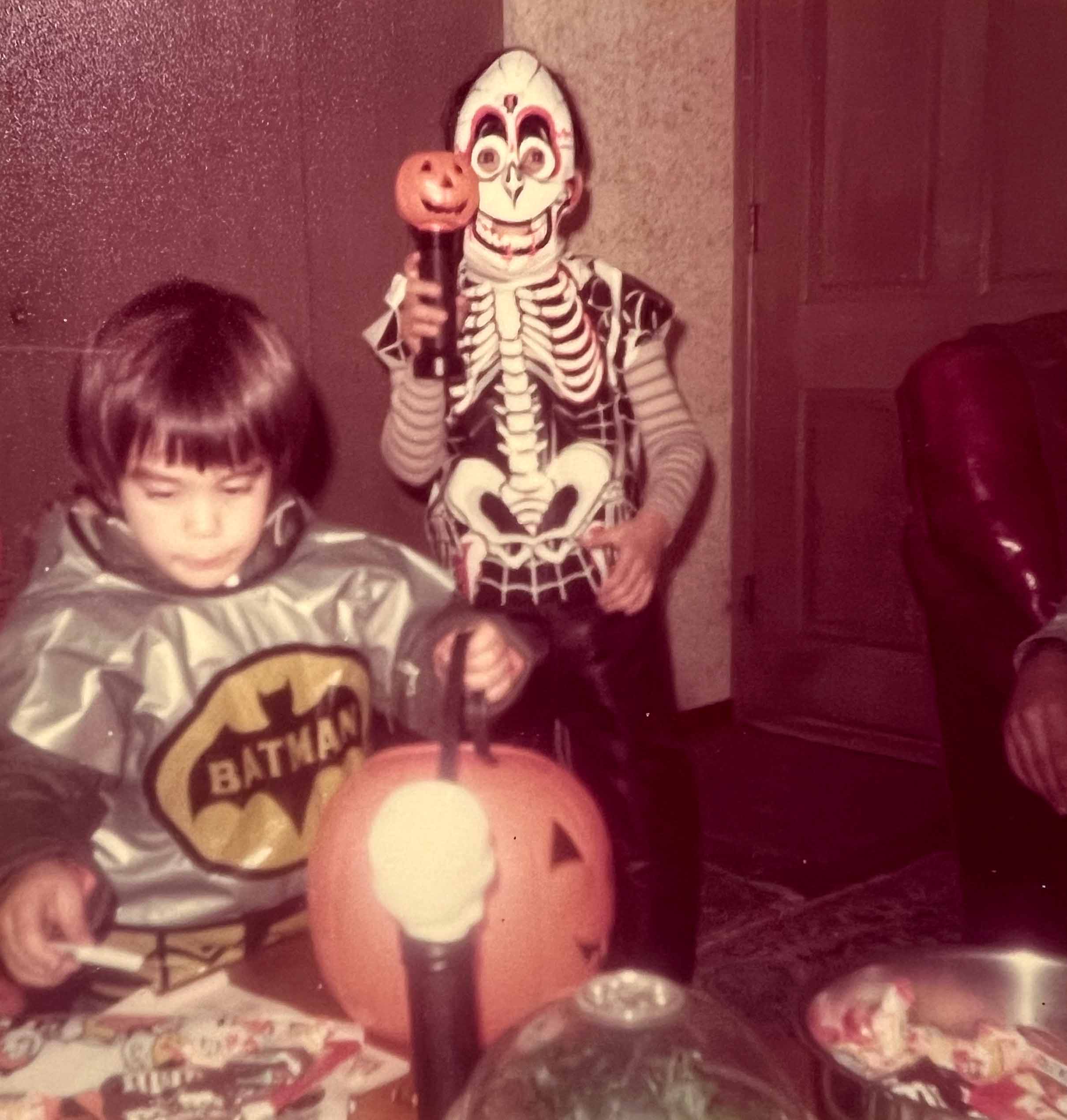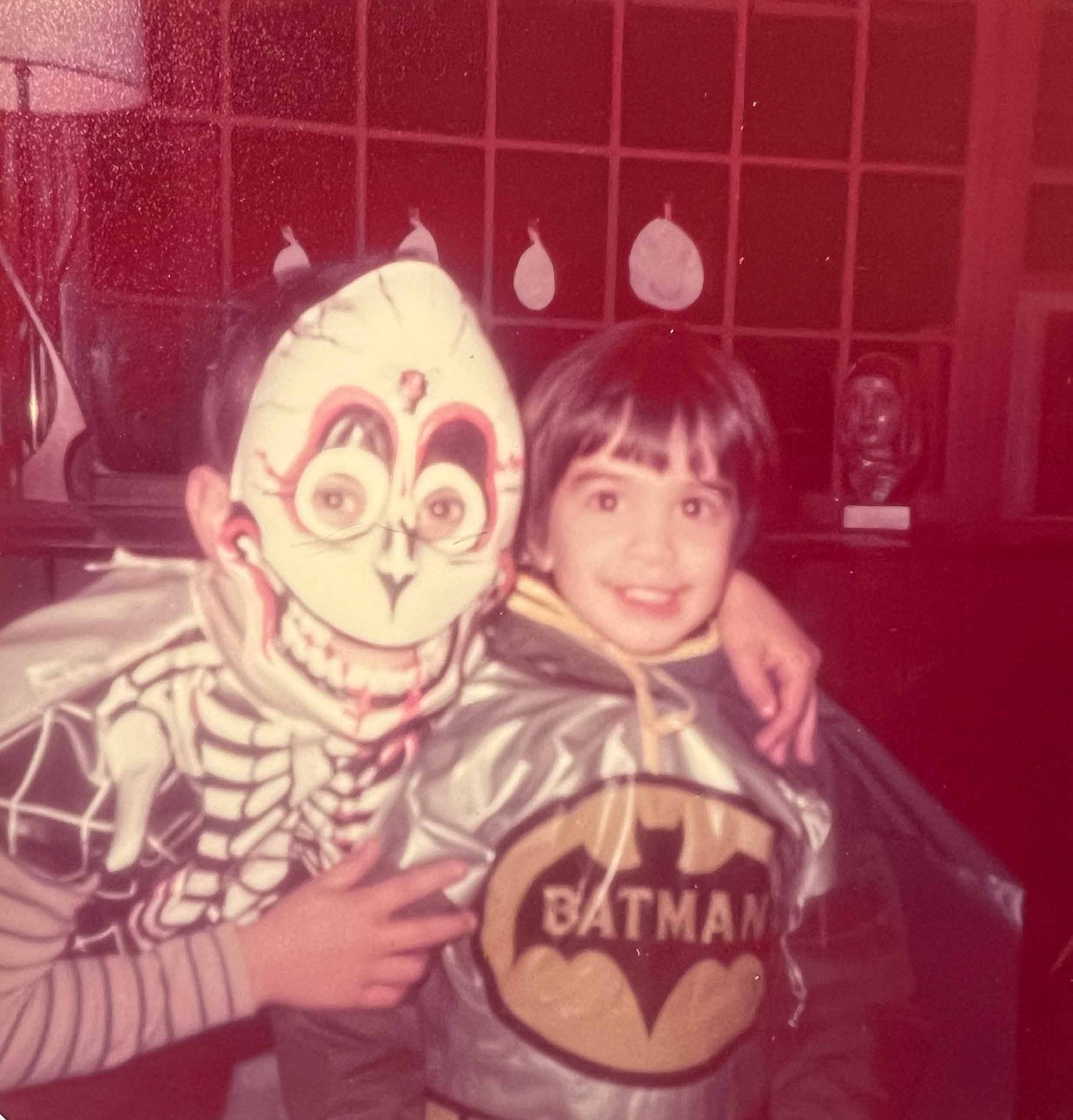

As a kid growing up in the 1970s, I spent many post-homework evenings walking the aisles of the local K-Mart or Ann & Hope with my parents and my younger brother, searching for the coolest costume to wear to the school Halloween party—and, of course, for trick-or-treating. Looking back, those costumes seem downright ridiculous by today’s standards, yet I still fondly recall the process of searching, buying, and proudly wearing them.
The Halloween section of these stores was something magical. Each costume came in a lightweight cardboard box with a cellophane window. Inside, a vibrantly colored nylon suit was folded neatly beneath a glossy, molded plastic mask. The mask, often held on with a thin elastic string stapled at the sides, had two oval eye-holes and a tiny slit for the mouth. They weren’t exactly comfortable—and they certainly didn’t breathe—but to us, they were everything.
I vividly remember being Casper the Friendly Ghost one year, then a Skeleton alongside my brother’s Batman, and eventually I was Dracula. Each costume had its own moment of glory, though most didn’t survive much beyond that single night. The fabric would tear, the elastic band on the mask would snap, and yet none of that mattered. It was about transformation. For one night, you weren’t just a kid—you were a caped crusader, a galactic villain, or a classic movie monster.
Of course, I grew up in New England, where Halloween night meant one other thing: cold. Bitter cold. The kind of chill that crept into your bones and made you second-guess your commitment to the costume. Those who grew up in cold climates will probably not-so-fondly recall the dilemma—either trying to squeeze your cheap Halloween costume over a bulky winter jacket or, worse, covering it up entirely. There’s nothing quite like trying to be Dracula with your cape tucked beneath a puffy ski coat.
Still, we were out there. Year after year. Our parents trailing behind with flashlights. Our candy bags—often pillowcases—growing heavier with every block. We knew which houses gave out the full-size candy bars, which ones handed out pennies or fruit, and which ones required you to tell a joke or perform a trick first. It was an unspoken social map passed down from older siblings and neighborhood kids.
And there was always that one house—every town had one—that went all in. The yard covered in fake tombstones, a strobe light in the window, maybe a speaker playing ghostly moans. We'd dare each other to walk up to the porch and knock.
By the time the 1980s rolled around, I had pretty much aged out of trick-or-treating and into Halloween parties. The cold October nights spent running from door to door gave way to evenings in my parents’ basement with friends. We’d mix up “mocktails” like Shirley Temples and Roy Rogers before anyone even called them that. We’d turn on spooky movies—maybe "The Legend of Sleepy Hollow" or "Abbott and Costello Meet Frankenstein"—and stay up late laughing and telling stories.
Halloween was changing, but it was still ours.
The tradition of dressing up on Halloween has roots going back centuries. In ancient Celtic festivals like Samhain, people wore costumes to ward off roaming spirits. They believed the boundary between the living and the dead was especially thin on October 31, and disguising oneself in animal skins or ghoulish garb could help trick the supernatural.
When Irish and Scottish immigrants brought these traditions to America in the 19th century, the customs evolved. By the early 20th century, Halloween became a more community-centered holiday with parades, parties, and costumes focused less on spirits and more on fun. During the 1930s, mass-produced costumes started to appear in stores—offering kids the chance to become cowboys, clowns, or cartoon characters.
By the time I was hunting the aisles of K-Mart in the 1970s, companies like Ben Cooper, Collegeville, and Halco dominated the Halloween costume market. Ben Cooper, in particular, became a household name. They struck licensing deals with Marvel, DC, Disney, and later Star Wars—so that kids like me could become Spider-Man, Cinderella, or Luke Skywalker for the night.
The costumes were inexpensive, easy to manufacture, and incredibly popular. But they were also... let’s just say, creatively interpreted. A Darth Vader costume might consist of a plastic mask and a smock with a printed image of Darth Vader’s face and logo—on the chest. It didn’t make much sense, but we didn’t care. The point was to wear the mask, feel the part, and run wild into the October night.
Modern Halloween costumes are in a different league—foam armor, LED lights, movie-accurate replicas—but I still think there was something uniquely special about the simplicity of those boxed sets. They were affordable, accessible, and for many families, part of a cherished yearly ritual.
Even now, when I walk into a Halloween store and see a wall of masks, I’m transported back. I remember the thrill of picking out a costume, the smell of vinyl and cardboard, and the cold, exhilarating wind that always seemed to follow us from door to door.
Those memories are stitched into the very fabric of New England’s Halloween traditions. A little ridiculous. A little sweet. Always cold. And absolutely unforgettable.






